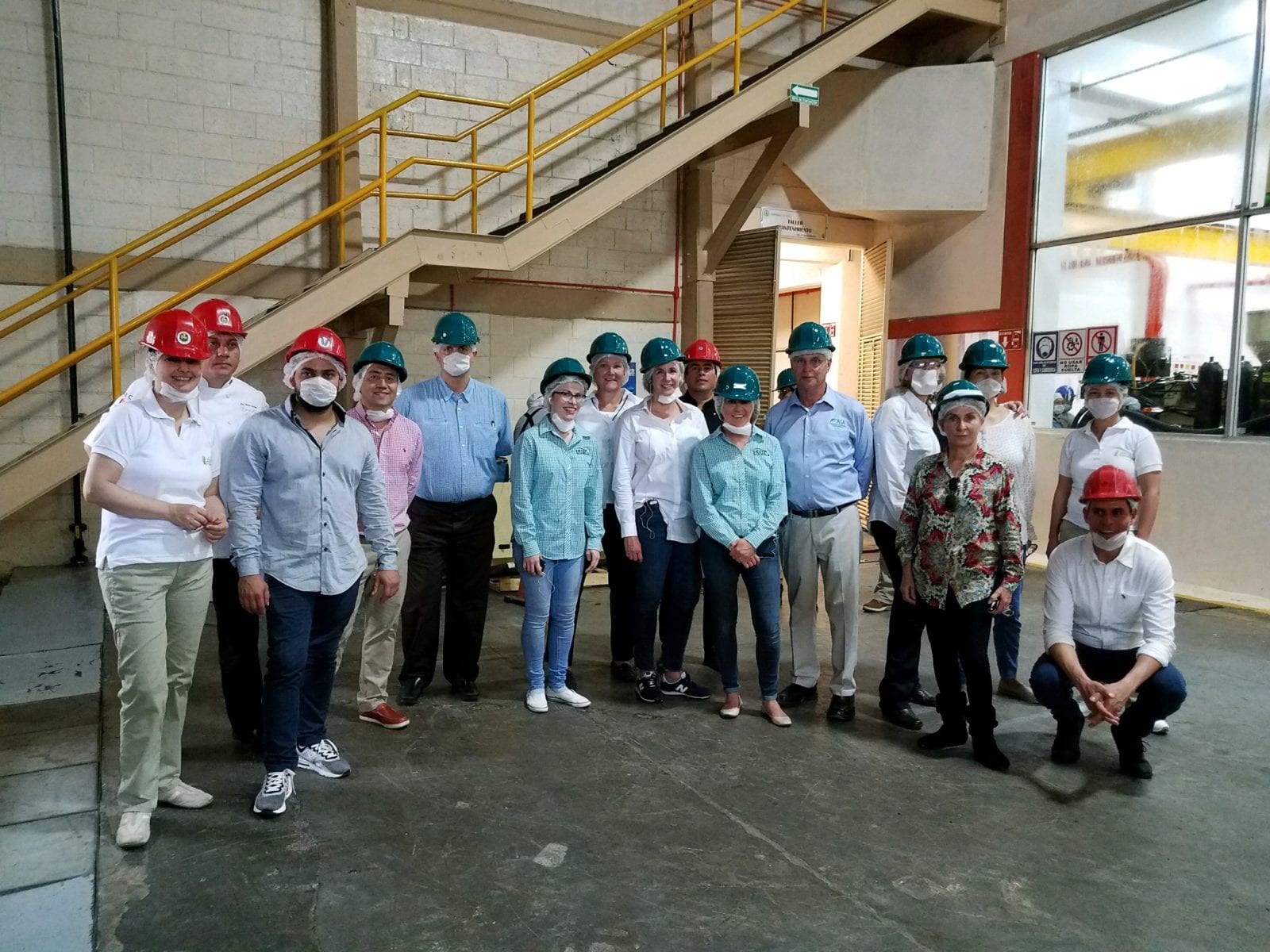U.S. Farmers Participate in U.S. Soybean Oil Conference in Mexico
- Category:
- General News
- Soybean OIl

A delegation of U.S. grower leaders attended the U.S. Soybean Oil Latin American Summit in Merida, Mexico from September 5 – 9. Ken Boswell, American Soybean Board (ASA) – Nebraska; Brian Kemp, ASA – Iowa; Rochelle Krusemark, United Soybean Board (USB) – Minnesota; and Joel Schreurs, ASA – Minnesota represented U.S. soybean farmers at this conference aimed at increasing the preference for U.S. soybean oil in the Americas region. USSEC and USB director Doug Winter also joined the conference in the U.S. Soy industry’s first-ever live feed.
The first morning of the conference featured a wide range of speakers.
USSEC COO Ed Beaman spoke to the approximately 120 attendees comprised of crushers and refiners; food service and distribution companies; hotel, restaurant, and institutions (HRI) chefs; and traders and influencers. He said that they are important to USSEC and important to each other. “This is the value chain,” he stated.
Mr. Beaman said that the conference had one strategic goal – to identify opportunities to help growth. The Americas region represents 7 of the top 10 U.S. Soy export countries and 63 percent of U.S. soybean oil exports. The 305 million people of the region represent 6 percent of the global GDP.
“Continuous growth shows that we are getting things done,” stated Mr. Beaman. He also stressed that family farms growing product on sustainable farms are prime examples of successful businesses across the value chain producing the “highest quality soy products the world has ever seen.”
David Hightower, president of the Hightower Report, the world’s most widely read daily research package, provided an overview of the U.S. and global soybean markets. Mr. Hightower, who analyzes futures for financial agriculture and political markets, said that he believes that the globalization of the economy will continue to completely absorb the production of all commodities.
Ms. Krusemark spoke to attendees about sustainability and family farming. “Every farm is very different,” she said, “and you must use what works for your soil, weather, or fields on your farm.” She explained sustainability methods such as conservation till; no till; strip till; crop rotation; cover crops; terraces and waterways; solar and wind power; precision farming; and the benefits of biotech.

USSEC consultant Gerardo Luna talked about the U.S. Soy Sustainability Assurance Protocol (SSAP) and the sustainable supply chain. He stressed the importance of communicating a clear sustainability message sustainability to Millennials.
Joanna Clifton, Client Development & Market Analysis, Innova Market Insights, spoke about new market soybean oil opportunities and trends. In Latin America, 3.8 percent of all foods and beverages contain soybean oil, which is higher than the global average. Over the past 5 years, the Americas region has shown the greatest growth (23 percent) in foods and beverages containing soybean oil.
During the live feed, Doug Winter spoke to conference participants from his farm in White County, Illinois.
Mr. Winter projects that he will begin harvesting his soybeans between September 20 and October 10 and said that his plants are averaging between 60 to 70 pods this year, which could point to a harvest yielding about 65 to 70 bushels per acre or 4.5 metric tons (MT) per hectare.

He next treated attendees to a virtual tour, discussing the various equipment and technologies that he uses at his farm. He said, “In addition to being a big part of continuous improvement, sustainability is a continuous learning process.”
Mr. Winter finished up his virtual tour and Q&A session by discussing his storage system and marketing plan.
Mike Steenhoek, Executive Director, Soy Transportation Coalition, spoke about transportation being the connectivity between supply and demand. “A multi-modal transportation system allows farmers to be among the most international of enterprises,” he said, calling the U.S. “the most sustainable, cost effective, and reliable” supplier.
“The U.S. transportation system allows us to be competitive on international destinations,” he summarized.
That afternoon, participants divided into breakout sessions, attending either trade facilitation meetings or listening to presentations about the benefits of U.S. soybean oil, including the importance of its chemical composition, its uses in the food industry, the results of clinical research, and myths and facts about GMO soybean oil.
Guests attended a dinner at Merida’s Museo Maya, where they also took a guided tour and watched a presentation on Mayan agriculture.

The second day of the conference kicked off with field visits. Attendees either visited one of Mexico’s largest soybean oil production plants, Proteinas y Oleicos, or Puerto Progreso, a port from which U.S. Soy is transported for an up-close look at the path U.S. Soy takes after it leaves the farm and travels south of the border.


Click here to watch and listen to USSEC consultant Mark Anderson talking on-site at Puerto Progresso about the role that the reliable transportation of U.S. Soy plays in the U.S. Soy Advantage, and how it factors into Latin American purchasers’ decision to buy U.S. Soy over other options.


Four breakout sessions took place that afternoon: trade facilitation meetings, a focus group on high oleic soybean oil, a marketing and communication training session, and a chefs training workshop.
That evening, chefs from the Americas region used U.S. soybean oil to showcase Latin American foods at a reception at Quinta Montes Molina.

The third day of the conference revolved around providing pertinent communications and marketing information to each group: HRI; food industry; government and institutions; and retail and wholesalers.